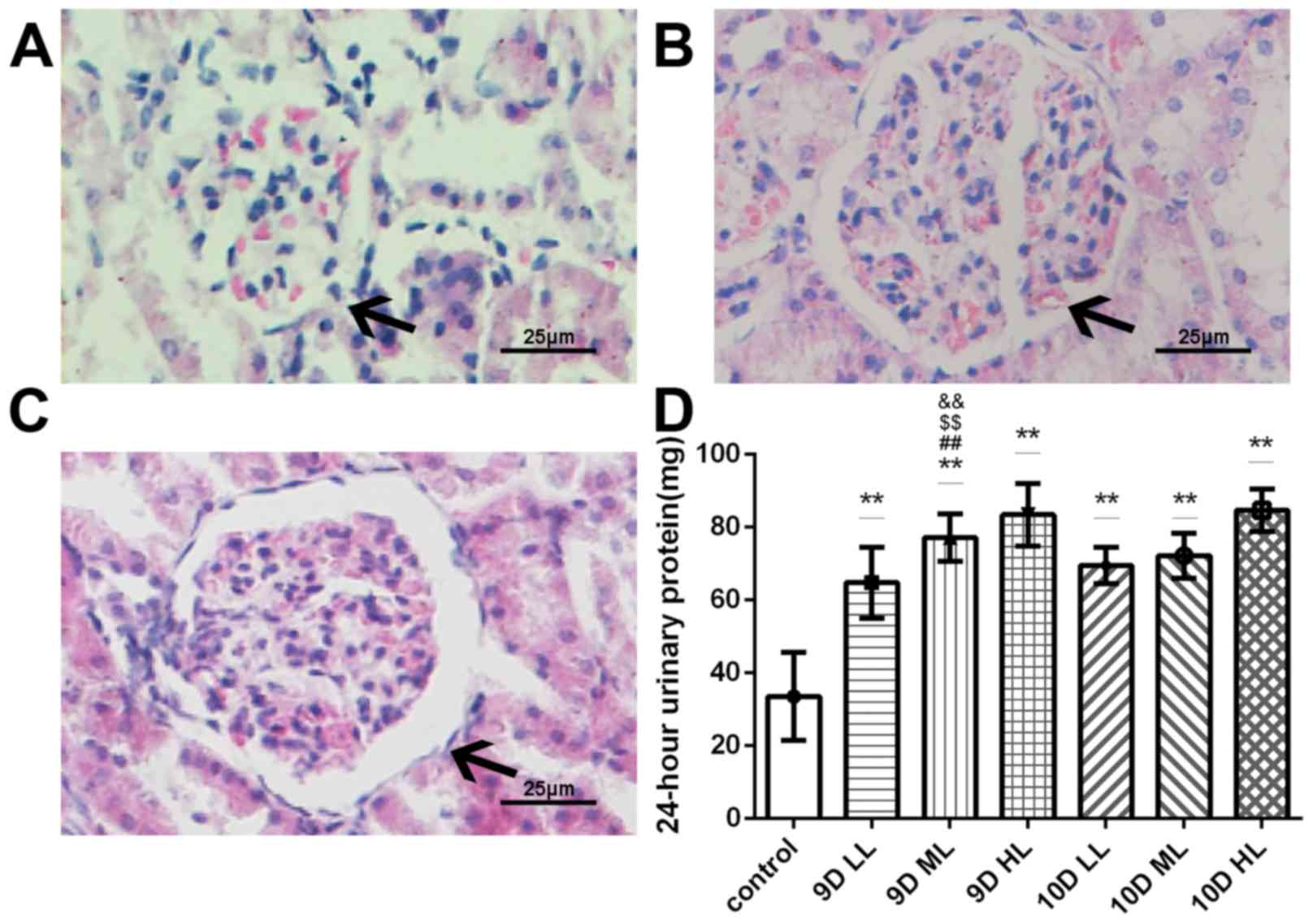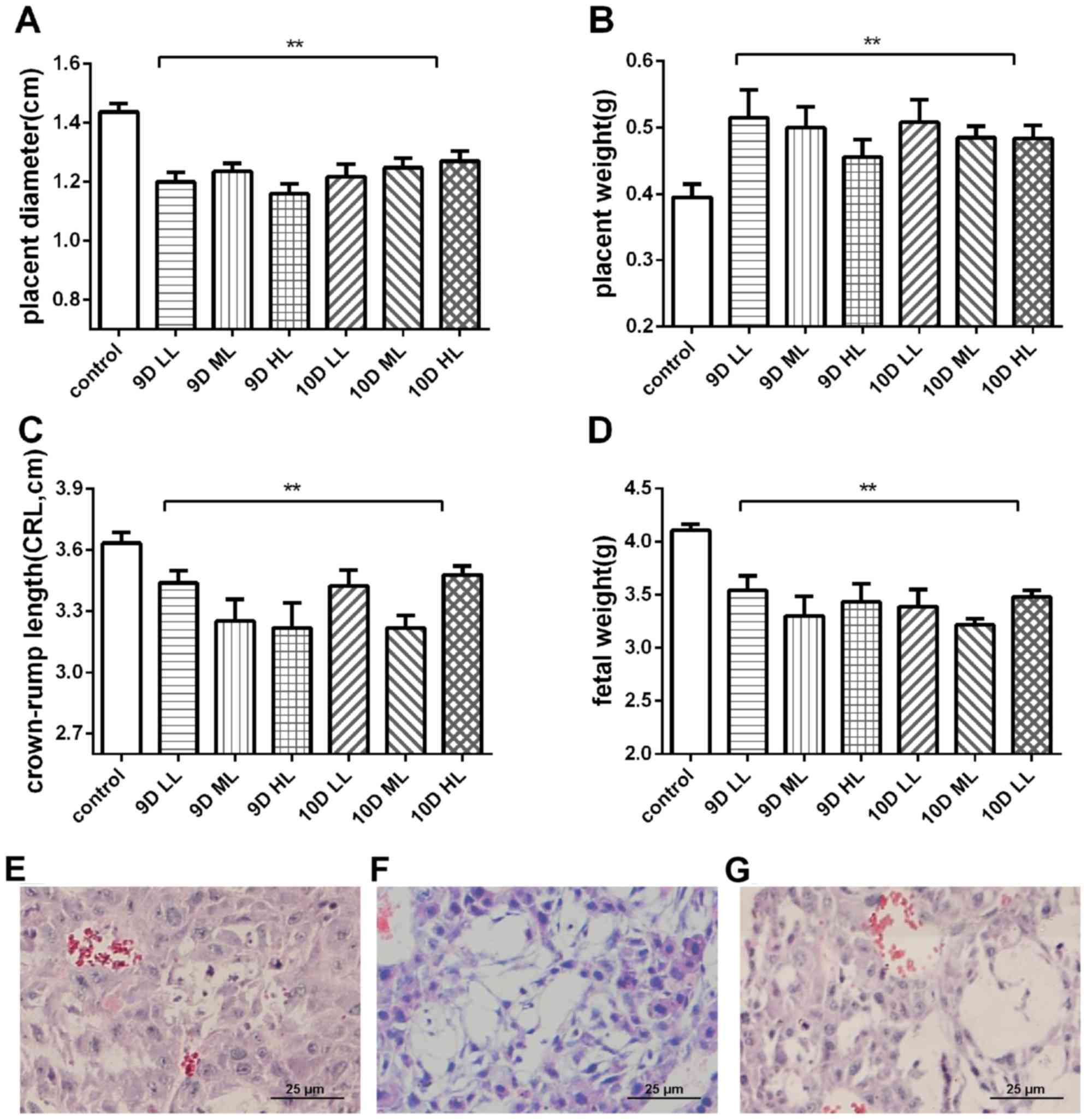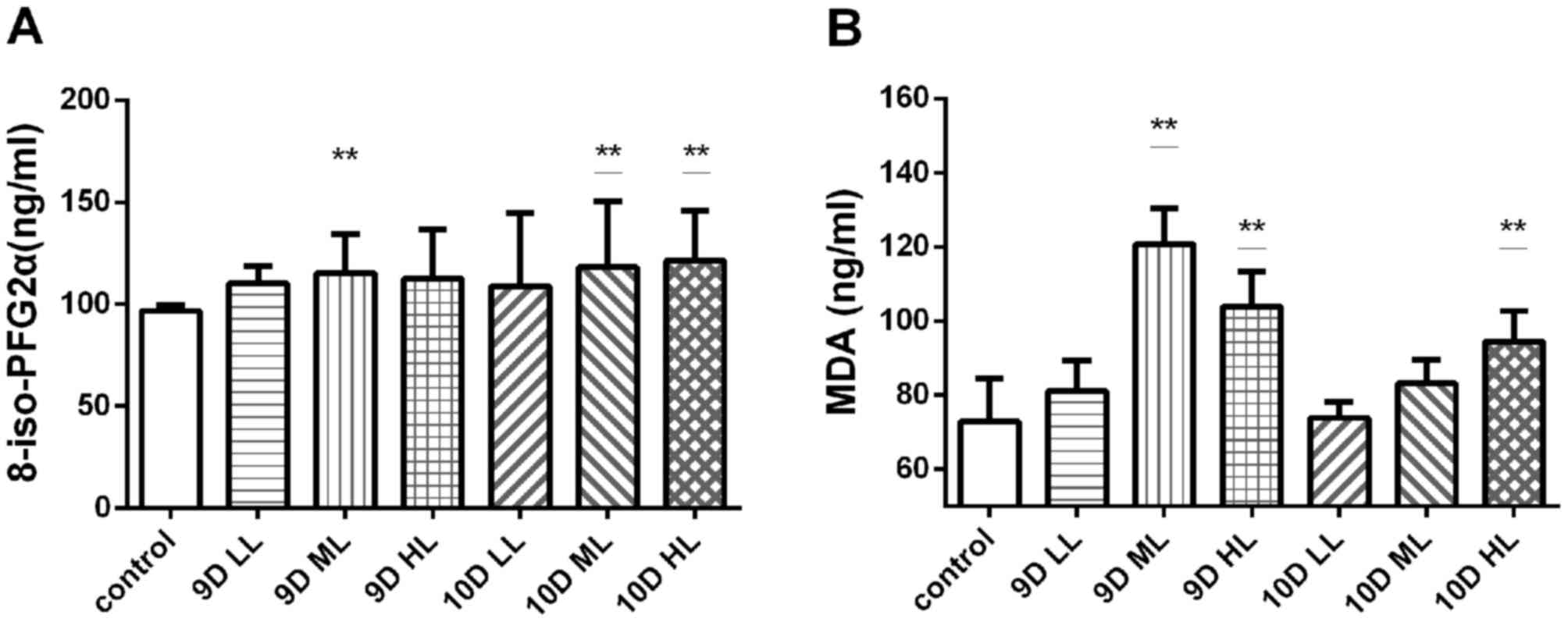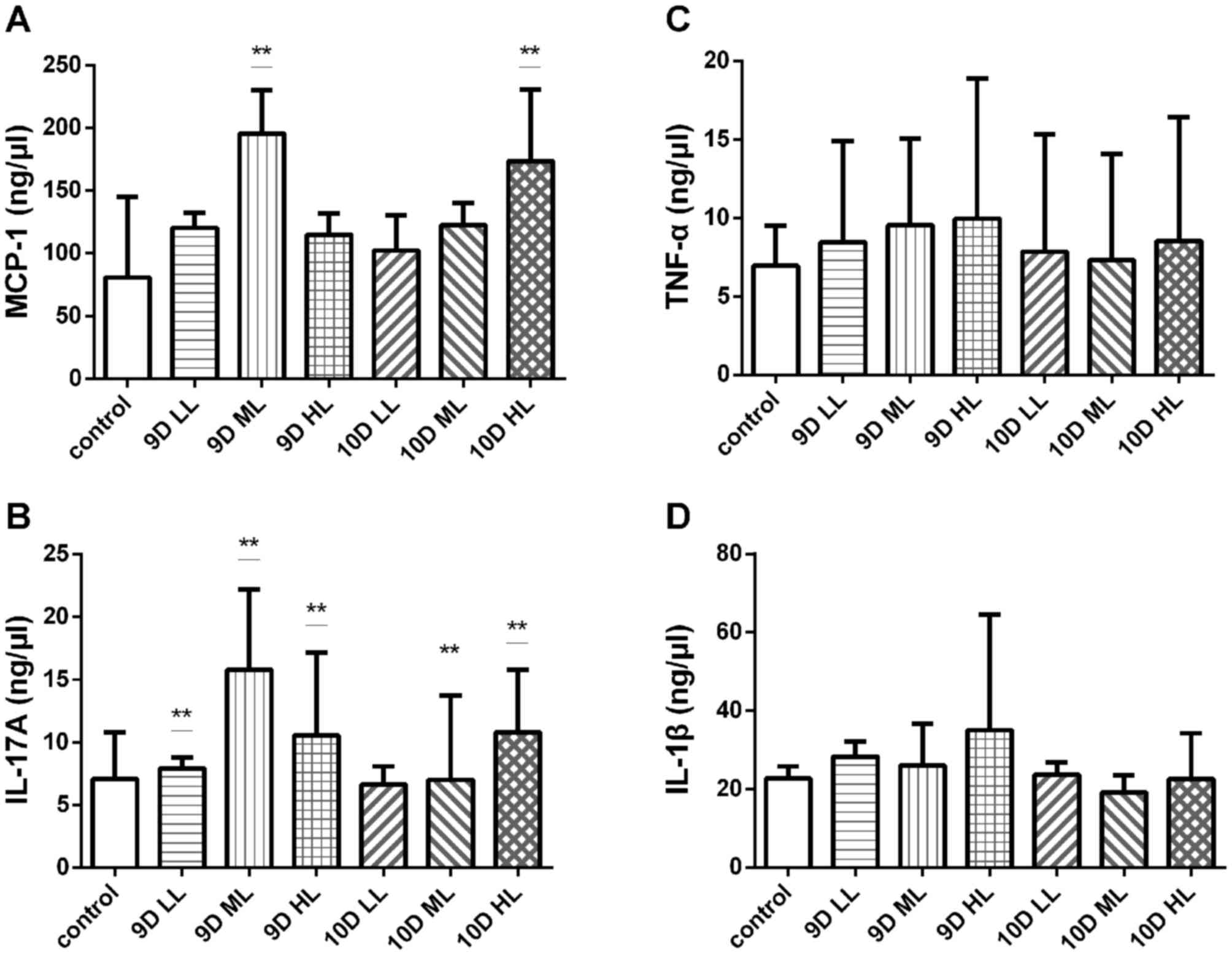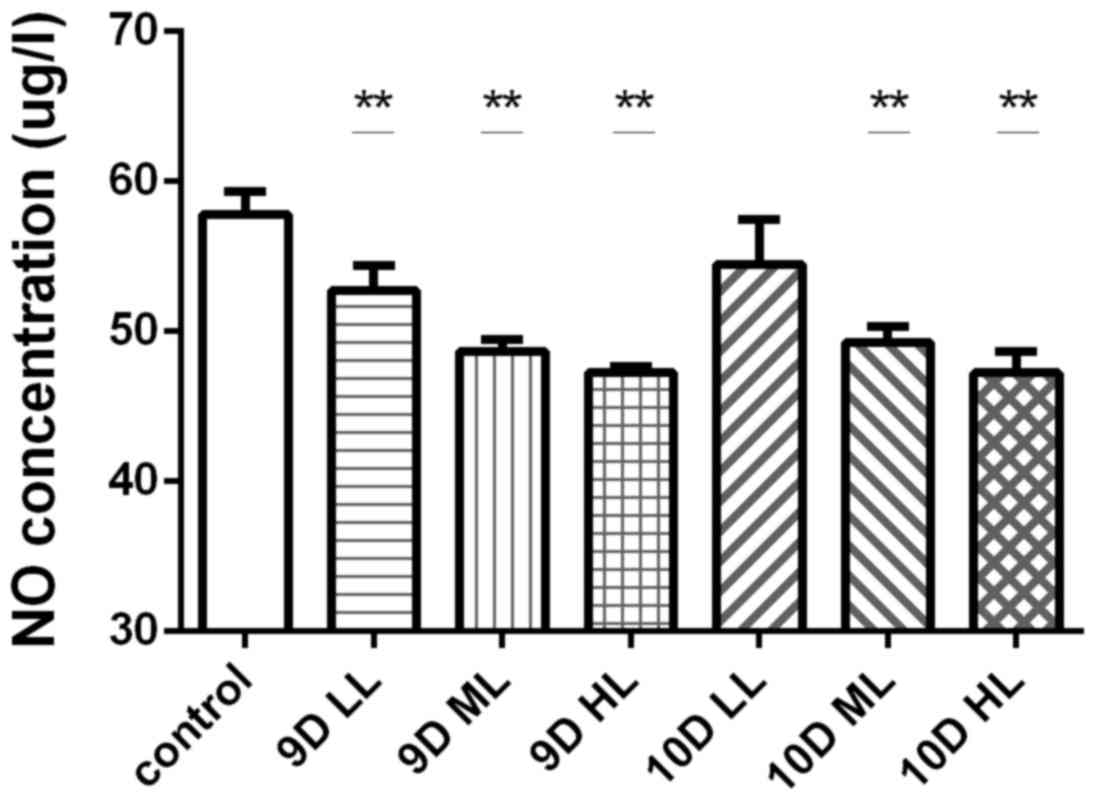|
1
|
American College of Obstetricians and
Gynecologists; Task Force on Hypertension in Pregnancy:
Hypertension in pregnancy. Report of the American College of
Obstetricians and Gynecologists' Task Force on Hypertension in
Pregnancy. Obstet Gynecol. 122:1122–1131. 2013.PubMed/NCBI
|
|
2
|
Al-Jameil N, Aziz Khan F, Fareed Khan M
and Tabassum H: A brief overview of preeclampsia. J Clin Med Res.
6:1–7. 2014.PubMed/NCBI
|
|
3
|
Wang A, Rana S and Karumanchi SA:
Preeclampsia: The role of angiogenic factors in its pathogenesis.
Physiology (Bethesda). 24:147–158. 2009.PubMed/NCBI
|
|
4
|
ACOG Committee on Obstetric Practice: ACOG
practice bulletin. Diagnosis and management of preeclampsia and
eclampsia. Number 33, January 2002. American College of
Obstetricians and Gynecologists. Int J Gynaecol Obstet. 77:67–75.
2002.PubMed/NCBI
|
|
5
|
Khan KS, Wojdyla D, Say L, Gülmezoglu AM
and van Look PF: WHO analysis of causes of maternal death: A
systematic review. Lancet. 367:1066–1074. 2006. View Article : Google Scholar : PubMed/NCBI
|
|
6
|
Steegers EA, von Dadelszen P, Duvekot JJ
and Pijnenborg R: Pre-eclampsia. Lancet. 376:631–644. 2010.
View Article : Google Scholar : PubMed/NCBI
|
|
7
|
European Society of Gynecology (ESG);
Association for European Paediatric Cardiology (AEPC); German
Society for Gender Medicine (DGesGM); Regitz-Zagrosek V, Blomstrom
Lundqvist C, Borghi C, Cifkova R, Ferreira R, Foidart JM, Gibbs JS,
et al: ESC Guidelines on the management of cardiovascular diseases
during pregnancy: The Task Force on the Management of
Cardiovascular Diseases during Pregnancy of the European Society of
Cardiology (ESC). Eur Heart J. 32:3147–3197. 2011. View Article : Google Scholar : PubMed/NCBI
|
|
8
|
Soobryan N, Murugesan S, Phoswa W,
Gathiram P, Moodley J and Mackraj I: The effects of sildenafil
citrate on uterine angiogenic status and serum inflammatory markers
in an L-NAME rat model of pre-eclampsia. Eur J Pharmacol.
795:101–107. 2017. View Article : Google Scholar : PubMed/NCBI
|
|
9
|
Jim B and Karumanchi SA: Preeclampsia:
Pathogenesis, prevention, and long-term complications. Semin
Nephrol. 37:386–397. 2017. View Article : Google Scholar : PubMed/NCBI
|
|
10
|
Lisonkova S and Joseph KS: Incidence of
preeclampsia: Risk factors and outcomes associated with
early-versus late-onset disease. Am J Obstet Gynecol.
209:544.e1–544.e12. 2013. View Article : Google Scholar
|
|
11
|
Hladunewich M, Karumanchi SA and Lafayette
R: Pathophysiology of the clinical manifestations of preeclampsia.
Clin J Am Soc Nephrol. 2:543–549. 2007. View Article : Google Scholar : PubMed/NCBI
|
|
12
|
Roberts JM and Gammill HS: Preeclampsia:
Recent insights. Hypertension. 46:1243–1249. 2005. View Article : Google Scholar : PubMed/NCBI
|
|
13
|
Lam C, Lim KH and Karumanchi SA:
Circulating angiogenic factors in the pathogenesis and prediction
of preeclampsia. Hypertension. 46:1077–1085. 2005. View Article : Google Scholar : PubMed/NCBI
|
|
14
|
Chaiworapongsa T, Chaemsaithong P, Yeo L
and Romero R: Pre-eclampsia part 1: Current understanding of its
pathophysiology. Nat Rev Nephrol. 10:466–480. 2014. View Article : Google Scholar : PubMed/NCBI
|
|
15
|
Powe CE, Levine RJ and Karumanchi SA:
Preeclampsia, a disease of the maternal endothelium: The role of
antiangiogenic factors and implications for later cardiovascular
disease. Circulation. 123:2856–2869. 2011. View Article : Google Scholar : PubMed/NCBI
|
|
16
|
Zeisler H, Hund M and Verlohren S: The
sFlt-1: PlGF ratio in women with suspected preeclampsia. N Engl J
Med. 374:1785–1786. 2016. View Article : Google Scholar : PubMed/NCBI
|
|
17
|
Motta C, Grosso C, Zanuzzi C, Molinero D,
Picco N, Bellingeri R, Alustiza F, Barbeito C, Vivas A and Romanini
MC: Effect of Sildenafil on Pre-Eclampsia-Like Mouse Model Induced
By L-Name. Reprod Domest Anim. 50:611–616. 2015. View Article : Google Scholar : PubMed/NCBI
|
|
18
|
Souza CO, Peraçoli MT, Weel IC, Bannwart
CF, Romão M, Nakaira-Takahagi E, Medeiros LT, Silva MG and Peraçoli
JC: Hepatoprotective and anti-inflammatory effects of silibinin on
experimental preeclampsia induced by L-NAME in rats. Life Sci.
91:159–165. 2012. View Article : Google Scholar : PubMed/NCBI
|
|
19
|
Liu W, Qiao F, Liu H, Gong X, Shi X, Li Y
and Wu Y: Low molecular weight heparin improves proteinuria in rats
with L-NAME induced preeclampsia by decreasing the expression of
nephrin, but not podocin. Hypertens Pregnancy. 34:24–35. 2015.
View Article : Google Scholar : PubMed/NCBI
|
|
20
|
Rowsell HC: Program and objectives of the
Canadian Council on Animal Care. Lab Anim Sci. 37:24–27.
1987.PubMed/NCBI
|
|
21
|
Song Y, Shi MM, Zhang YY, Mo XD, Wang Y,
Zhang XH, Xu LP, Huang XJ and Kong Y: Abnormalities of the bone
marrow immune microenvironment in patients with prolonged isolated
thrombocytopenia after allogeneic hematopoietic stem cell
transplantation. Biol Blood Marrow Transplant. 23:906–912. 2017.
View Article : Google Scholar : PubMed/NCBI
|
|
22
|
Chatziandreou N, Farsakoglu Y,
Palomino-Segura M, D'Antuono R, Pizzagalli DU, Sallusto F,
Lukacs-Kornek V, Uguccioni M, Corti D, Turley SJ, et al: Macrophage
death following influenza vaccination initiates the inflammatory
response that promotes dendritic cell function in the draining
lymph node. Cell Rep. 18:2427–2440. 2017. View Article : Google Scholar : PubMed/NCBI
|
|
23
|
Zhu Y, Paniccia A, Schulick AC, Chen W,
Koenig MR, Byers JT, Yao S, Bevers S and Edil BH: Identification of
CD112R as a novel checkpoint for human T cells. J Exp Med.
213:167–176. 2016. View Article : Google Scholar : PubMed/NCBI
|
|
24
|
Gille JH, Moore DG and Sedgwick CJ:
Placental infarction: A sign of pre-eclampsia in a patas monkey
(Erythrocebus patas). Lab Anim Sci. 27:119–121. 1977.PubMed/NCBI
|
|
25
|
Rogers JB, Klein R and Blumenthal HT:
Placental permeability in a toxemia-susceptible strain of guinea
pigs. Am J Obstet Gynecol. 88:495–501. 1964. View Article : Google Scholar : PubMed/NCBI
|
|
26
|
Diket AL, Pierce MR, Munshi UK, Voelker
CA, Eloby-Childress S, Greenberg SS, Zhang XJ, Clark DA and Miller
MJ: Nitric oxide inhibition causes intrauterine growth retardation
and hind-limb disruptions in rats. Am J Obstet Gynecol.
171:1243–1250. 1994. View Article : Google Scholar : PubMed/NCBI
|
|
27
|
Kumasawa K, Ikawa M, Kidoya H, Hasuwa H,
Saito-Fujita T, Morioka Y, Takakura N, Kimura T and Okabe M:
Pravastatin induces placental growth factor (PGF) and ameliorates
preeclampsia in a mouse model. Proc Natl Acad Sci USA.
108:1451–1455. 2011. View Article : Google Scholar : PubMed/NCBI
|
|
28
|
Venkatesha S, Toporsian M, Lam C, Hanai J,
Mammoto T, Kim YM, Bdolah Y, Lim KH, Yuan HT, Libermann TA, et al:
Soluble endoglin contributes to the pathogenesis of preeclampsia.
Nat Med. 12:642–649. 2006. View
Article : Google Scholar : PubMed/NCBI
|
|
29
|
Tal R, Shaish A, Barshack I, Polak-Charcon
S, Afek A, Volkov A, Feldman B, Avivi C and Harats D: Effects of
hypoxia-inducible factor-1alpha overexpression in pregnant mice:
Possible implications for preeclampsia and intrauterine growth
restriction. Am J Pathol. 177:2950–2962. 2010. View Article : Google Scholar : PubMed/NCBI
|
|
30
|
Kanasaki K, Palmsten K, Sugimoto H, Ahmad
S, Hamano Y, Xie L, Parry S, Augustin HG, Gattone VH, Folkman J, et
al: Deficiency in catechol-O-methyltransferase and
2-methoxyoestradiol is associated with pre-eclampsia. Nature.
453:1117–1121. 2008. View Article : Google Scholar : PubMed/NCBI
|
|
31
|
Kupferminc MJ, Peaceman AM, Wigton TR,
Rehnberg KA and Socol ML: Tumor necrosis factor-alpha is elevated
in plasma and amniotic fluid of patients with severe preeclampsia.
Am J Obstet Gynecol. 170:1752–1757; discussion 1757–1759. 1994.
View Article : Google Scholar : PubMed/NCBI
|
|
32
|
LaMarca BB, Bennett WA, Alexander BT,
Cockrell K and Granger JP: Hypertension produced by reductions in
uterine perfusion in the pregnant rat: Role of tumor necrosis
factor-alpha. Hypertension. 46:1022–1025. 2005. View Article : Google Scholar : PubMed/NCBI
|
|
33
|
Wenzel K, Rajakumar A, Haase H, Geusens N,
Hubner N, Schulz H, Brewer J, Roberts L, Hubel CA, Herse F, et al:
Angiotensin II type 1 receptor antibodies and increased angiotensin
II sensitivity in pregnant rats. Hypertension. 58:77–84. 2011.
View Article : Google Scholar : PubMed/NCBI
|
|
34
|
Takimoto-Ohnishi E, Saito T, Ishida J,
Ohnishi J, Sugiyama F, Yagami K and Fukamizu A: Differential roles
of renin and angiotensinogen in the feto-maternal interface in the
development of complications of pregnancy. Mol Endocrinol.
19:1361–1372. 2005. View Article : Google Scholar : PubMed/NCBI
|
|
35
|
Baksu B, Davas I, Baksu A, Akyol A and
Gulbaba G: Plasma nitric oxide, endothelin-1 and urinary nitric
oxide and cyclic guanosine monophosphate levels in hypertensive
pregnant women. Int J Gynaecol Obstet. 90:112–117. 2005. View Article : Google Scholar : PubMed/NCBI
|
|
36
|
Vechoropoulos M, Ish-Shalom M, Shaklai S,
Sack J, Stern N and Tordjman KM: The proatherogenic effect of
chronic nitric oxide synthesis inhibition in ApoE-Null mice is
dependent on the presence of PPAR α. PPAR Res. 2014:1245832014.
View Article : Google Scholar : PubMed/NCBI
|
|
37
|
Ribeiro MO, Antunes E, de Nucci G,
Lovisolo SM and Zatz R: Chronic inhibition of nitric oxide
synthesis. A new model of arterial hypertension. Hypertension.
20:298–303. 1992.
|
|
38
|
Wang Y, Zhang F, Liu Y, Yin S, Pang X, Li
Z and Wei Z: Nebivolol alleviates aortic remodeling through eNOS
upregulation and inhibition of oxidative stress in l-NAME-induced
hypertensive rats. Clin Exp Hypertens. 39:628–639. 2017. View Article : Google Scholar : PubMed/NCBI
|
|
39
|
Zeisler H, Llurba E, Chantraine F, Vatish
M, Staff AC, Sennström M, Olovsson M, Brennecke SP, Stepan H,
Allegranza D, et al: Predictive value of the sFlt-1: PlGF ratio in
women with suspected preeclampsia. N Engl J Med. 374:13–22. 2016.
View Article : Google Scholar : PubMed/NCBI
|
|
40
|
Amaral TAS, Ognibene DT, Carvalho LCRM,
Rocha APM, Costa CA, Moura RS and Resende AC: Differential
responses of mesenteric arterial bed to vasoactive substances in
L-NAME-induced preeclampsia: Role of oxidative stress and
endothelial dysfunction. Clin Exp Hypertens. 40:126–135. 2018.
View Article : Google Scholar : PubMed/NCBI
|
|
41
|
Cornelius DC, Hogg JP, Scott J, Wallace K,
Herse F, Moseley J, Wallukat G, Dechend R and LaMarca B:
Administration of interleukin-17 soluble receptor C suppresses TH17
cells, oxidative stress, and hypertension in response to placental
ischemia during pregnancy. Hypertension. 62:1068–1073. 2013.
View Article : Google Scholar : PubMed/NCBI
|
|
42
|
Miossec P and Kolls JK: Targeting IL-17
and TH17 cells in chronic inflammation. Nat Rev Drug Discov.
11:763–776. 2012. View Article : Google Scholar : PubMed/NCBI
|
|
43
|
Guerby P, Vidal F, Garoby-Salom S,
Vayssiere C, Salvayre R, Parant O and Negre-Salvayre A: Oxidative
stress and preeclampsia: A review. Gynecol Obstet Fertil.
43:751–756. 2015.(In French). View Article : Google Scholar : PubMed/NCBI
|
|
44
|
Walker JJ: Inflammation and preeclampsia.
Pregnancy Hyperte-ns. 1:43–47. 2011. View Article : Google Scholar
|
















